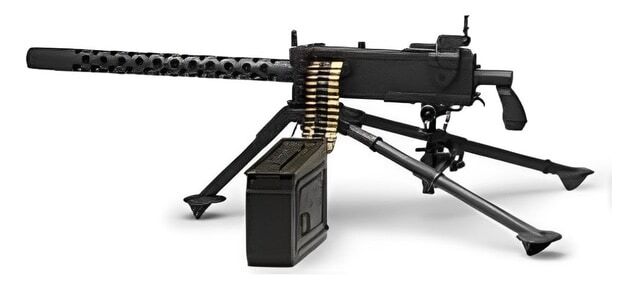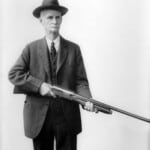
M1919: A Cornerstone of American Firepower
The M1919 machine gun, known formally as the Browning .30 Caliber M1919, holds a firm place in the annals of military history as one of the most potent and reliable firearms of the 20th century. Its development, manufacture, and deployment shaped not only the face of warfare but also the industrial capabilities of the nations that produced it.
Development and Predecessors
The genesis of the M1919 machine gun traces back to its distinguished predecessor, the M1917, which was designed by the renowned firearm innovator John Moses Browning. Developed amidst the urgent demands of World War I, the water-cooled M1917 provided the U.S. forces with a heavy machine gun that could maintain a high rate of sustained fire. However, its weight and cumbersome logistics made it less suited for the evolving rapid pace of warfare.
Following the end of WWI, the need for a lighter, more mobile machine gun was evident. Responding to this, John Browning began working on an air-cooled version of the M1917, leading to the development of the M1919. Unlike its predecessor, the M1919 did away with the water-cooling system and featured a heavier barrel that could absorb and dissipate heat, making it substantially lighter and more adaptable.
Manufacture
The U.S. Army officially adopted the M1919 machine gun in 1919, giving rise to its mass production. The primary manufacturers included Rock Island Arsenal, Saginaw Steering Gear division of General Motors, and Buffalo Arms Corporation. The manufacturing process involved forging, machining, and assembly, ensuring the robustness and reliability of the M1919.
However, production numbers were relatively modest until the onset of World War II. When the U.S. entered the war in 1941, demand for the M1919 surged. From 1941 to 1945, the three aforementioned manufacturers collectively produced over a million M1919 machine guns, showcasing the prowess of the U.S. industrial complex.
Use and Performance
The M1919 machine gun was a belt-fed, recoil-operated machine gun chambered for the .30-06 Springfield cartridge. This powerful cartridge, coupled with the weapon's rate of fire—400 to 600 rounds per minute—made the M1919 a formidable tool on the battlefield. Its effective range could reach up to 1,400 yards, depending on the variant.
The gun saw extensive service across various branches of the U.S. military and was deployed in different versions to suit a multitude of roles, from infantry support to anti-aircraft and vehicle mounting. It played a significant role in World War II and continued to be used during the Korean War and even the early stages of the Vietnam War.
Besides the U.S., the M1919 was also supplied in large numbers to allied nations through the Lend-Lease program during World War II, seeing service with British, Free French, and Soviet forces, among others. The M1919's production and usage extended well into the second half of the 20th century with numerous countries, such as Israel and Taiwan, continuing to use upgraded variants.
Comparative Analysis
While the M1919 machine gun was a mainstay of U.S. and allied forces, it wasn't the only machine gun that shaped the battlefields of the 20th century. Germany deployed the Maschinengewehr 34 (MG 34) and later the Maschinengewehr 42 (MG 42), both of which offered a higher rate of fire than the M1919 and utilized a general-purpose machine gun concept that influenced subsequent designs worldwide.
Meanwhile, British forces primarily used the Vickers machine gun, a water-cooled weapon that, like the M1917, proved reliable but was relatively heavy. Later in the war, the Bren light machine gun, chambered in .303 British, became the Commonwealth forces' primary squad automatic weapon.
On the Eastern Front, the Soviet Red Army deployed the Maxim M1910, another water-cooled machine gun, as well as the DP-27, a light machine gun known for its distinctive pan-shaped magazine.
Conclusion
The M1919 machine gun symbolized the evolution of warfare and military logistics in the 20th century. Its design and manufacture leveraged the lessons from its predecessors and the demands of modern warfare. The M1919 wasn't just a machine gun; it was a symbol of industrial capacity and adaptability, playing a pivotal role in the hands of U.S. and allied forces across multiple theaters of war.
Through its production and performance, the M1919 machine gun proved its mettle against other contemporary machine guns, shaping the doctrine and outcomes of battles. Its service life, extending across half a century and multiple conflicts, stands as a testament to its durability and reliability, hallmarks of John Moses Browning's design genius.
If you'd like to join a forum to discuss or find out more about this weapon, click here.
If you know of any forums or sites that should be referenced on this listing, please let us know here.




